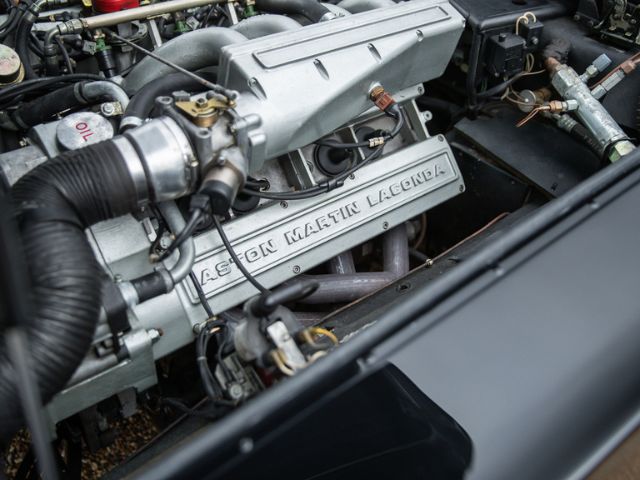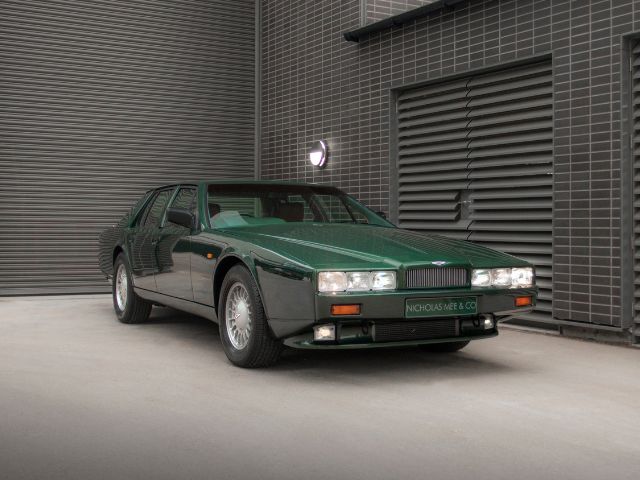Aston Martin History and it’s Legacy
What is Aston Martin?
Aston Martin is a British luxury sports car manufacturer celebrated for its iconic and high-performance vehicles throughout its history. In this article Aston Store have compiled a brief overview About Aston Martin’s history and the legacy that the brand has created since its inception in 1913. From the iconic DB5 that accompanied James Bond in 1964 Goldfinger Film to the New Era Modern vehicles such as the V12 Vantage and DB11 the history of Aston Martin is certainly a colourful one.

The DB5 Vantage Collection. One of the most iconic models in Aston Martins history
How Aston Martin got its name
The roots of the Aston Martin name delve into a rich tapestry of British automotive history, embodying a legacy of precision engineering and racing prowess. Founded in 1913 by Lionel Martin and Robert Bamford, the name “Aston Martin” amalgamates Martin’s surname with the Aston Hill climb, a venue that witnessed the duo’s early racing triumphs. This deliberate fusion reflects not only the founders’ identities but also the brand’s commitment to the relentless pursuit of performance, marrying elegance with speed.
Pre-War Aston Martin
The pre-war era for the brand represents the foundational period that laid the groundwork for the brand’s enduring legacy of automotive excellence. The company began its journey amidst the backdrop of the First World War. During this time, the brand established its identity as a producer of high-performance, luxury sports cars. The first Aston Martin was nicknamed the Coal Scuttle and was built in 1915 during the First World War.

The Aston Martin Wings Logo on a DBS V12 Vehicle
The Interwar Years
The interwar years saw the creation of iconic models like the Aston Martin Ulster, which showcased the brand’s commitment to racing success and performance innovation. Despite the challenges of the era, the brand cemented its reputation for engineering prowess and elegance, setting the stage for the post-war years and the subsequent evolution of the brand into a symbol of British sophistication and craftsmanship. The pre-war cars, with their sleek designs and remarkable performance, remain a testament to the resilience and vision of the founders and stand as revered artifacts in the annals of automotive history.

Aston Martin Ulster
The David Brown Era 1947-1972
In 1947, a pivotal moment in Aston Martin’s history unfolded as the visionary entrepreneur David Brown acquired the company, ushering in what would be famously known as The David Brown Era (1947-1972). Notably, Brown’s influence extended beyond just Aston Martin; it encompassed the acquisition of Lagonda. This strategic move merged the two venerable British automotive companies, paving the way for a new era of luxury and innovation. The amalgamation of Aston Martin and Lagonda was not merely a business manoeuvre; it represented the convergence of two distinguished entities, each contributing a unique legacy to the partnership.

Lagonda Engine in an AM V8
How Aston Martin Lagonda got its name
The formation of Aston Martin Lagonda and the new legal entity Aston Martin Lagonda Limited in the aftermath of this merger was symbolic, encapsulating a commitment to unparalleled luxury and craftsmanship. Under David Brown’s leadership, this union flourished, propelling AM Lagonda to new heights.

Aston Martin Lagonda Car
The Introduction of the DB Series
The DB series, a hallmark of this era with the DB named after David Brown, exemplified the pinnacle of elegance and sophistication, beginning with the Aston Martin DB2 and culminating in the iconic DB6. These models, including the legendary DB5 immortalized by its association with James Bond, not only defined automotive excellence but also added an extra layer of allure to the brand. The 1947 merger, therefore, laid the foundation for a legacy that seamlessly blended the distinguished heritages of Aston Martin and Lagonda, setting the stage for an era that would be eternally etched in the annals of automotive history.

Aston Martin DB MKIII DHC
The Feltham Factory
The Feltham era for the company, spanning from the early 1950s to the mid-1960s, is a significant chapter in the brand’s history, characterized by a focus on performance and the introduction of several iconic models. Named after the location of Aston Martin’s factory in Feltham, England, this era saw the production of key models from the David Brown Era like the DB2, DB2/4, and the DB Mark III. The Aston Martin DB2, introduced in 1950, marked a departure from pre-war designs, featuring a refined aerodynamic shape and a powerful Lagonda engine. The DB2/4, introduced in 1953, showcased practical innovations like occasional rear seats and a hatchback-style tailgate, demonstrating the companies commitment to both luxury and performance. The Feltham era also saw the introduction of the DB Mark III, a refined version of its predecessor. These models became renowned for their racing successes, with notable appearances at events like the Le Mans 24 Hours. The Feltham era, with its distinctive designs and racing triumphs, laid the foundation for the brands continued pursuit of excellence and solidified its position as a premier luxury sports car manufacturer.

Aston Martin DB4 GT
Newport Pagnell Factory
The Newport Pagnell era represents a pivotal period in Aston Martin’s history, spanning from the late 1960s to 2007. In 1967, production was shifted from Feltham to the purpose-built facility in Newport Pagnell, Buckinghamshire. The Aston Martin Newport Pagnell factory became synonymous with handcrafted luxury and meticulous attention to detail. The company continued its commitment to performance and elegance during this era, producing iconic models such as the DB4, DB5, and DB6.

Picture of an Aston Martin DB6 MK2
The birth of the V8 Engine
Notably, the Newport Pagnell factory witnessed the birth of the V8 engine, which powered models like the V8 Vantage and the V8 Virage. These models not only garnered acclaim for their engineering prowess but also contributed to the brand’s allure on both the road and the racetrack. The Aston Martin Newport Pagnell factory, with its skilled artisans and traditional craftsmanship, created a unique blend of modern performance and timeless elegance, solidifying the companies reputation as a manufacturer of luxury sports cars.

An Aston Martin V8 Vantage X Pack with a V8 Engine
The final cars produced at Newport Pagnell was the first generation Vanquish with the last model being produced in 2007, the V12 Vanquish S before production fully moved over to Aston Martins factory in Gaydon.

The Vanquish S was the last cars produced at the Newport Pagnell Factory
Post David Brown Era
The post-David Brown era ushered in a dynamic period for the company, characterized by a series of ownership changes and a relentless commitment to innovation. From 1972 onward, the company experienced fluctuations in ownership, each phase contributing to the brand’s evolution. In the late 1970s, the company faced financial challenges, leading to a change in ownership. The 1980s witnessed the brand under the leadership of Victor Gauntlett, and in the 1990s, Ford acquired a significant stake, injecting resources and technology.

The DB7 Vantage used a Ford Engine
Aston Martin in the 21st Century and who owns Aston Martin
The early 21st century saw the brand regain its independence, thanks to a consortium led by Prodrive’s David Richards. This era brought about the introduction of modern classics such as the V8 Vantage and the DB9. The mid-2010s marked a new chapter as Aston Martin ventured into the SUV market with the DBX. In 2020, the brand went public as a PLC, showcasing its resilience and adaptability. Throughout these years, the brand has consistently crafted vehicles that embody the essence of British luxury and performance, maintaining its status as an icon on the global automotive stage.

A GT8 and GT12 Vantage
Gaydon Era
The establishment of the Aston Martin Gaydon Factory in 2003 marked another transformative period for the company, representing a shift towards cutting-edge technology and modern manufacturing processes. The Gaydon Aston Martin Factory and now current location for where Martin is based and all new era vehicles are made, is in Warwickshire, this state-of-the-art factory locationbecame the nerve centre of the companies operations, embodying a commitment to innovation and precision engineering. At Gaydon, The company continued its legacy of crafting high-performance luxury sports cars while embracing contemporary design principles.

Modern Interior of the V12 Vantage AMR
The Birth of New Era Vehicles
The Gaydon era and Aston Martin Lagonda Gaydon Factory witnessed the birth of several notable ‘New Era Models’, including the DB9, which made its debut in 2004. This model exemplified a harmonious blend of elegance and performance, introducing a new design language that set the stage for subsequent releases. The facility also played a crucial role in the development of models like the DBS, V12 Vantage, and the Rapide, showcasing the versatility and adaptability of the brand in the modern automotive landscape. As the Gaydon factory became the hub for innovation and precision, it solidified the brands position as a leading luxury car manufacturer, ensuring that each vehicle rolling off the production line retained the brand’s hallmark of excellence.

The Gaydon Factory resulted in New Era Models such as The DB9
The history of the Aston Martin Lagonda Logo
The inception of the Aston Martin logo dates back to 1921 when a modest emblem featuring the letters “A” and “M” within a black, double-lined circle made its debut. However, it wasn’t until 1927 that the iconic Aston Martin wings badge emerged, adorned with an Art Deco font and meticulously detailed wings flanking the company name.

In the 1930s, the design underwent simplification while retaining the essence, with wings slightly more elevated. By 1932, a refinement straightened out the wings, foreshadowing the silhouette recognizable today. In 1947, the acquisition by David Brown led to an alteration, incorporating his name above the company’s.

Aston Martin Logo with David Brown on a DB4 GT Car
Transitioning into 1971, Company Developments Ltd. took the reins, heralding a change that removed Brown’s name, bringing the logo closer to its modern form. The logo experienced a subtle facelift in 2003, where the font of the company name was refined. This version endured for nearly two decades until the most recent redesign in 2022. The 2022 update introduces a sleeker wing pattern and a new typeface for the Aston Martin name, marking a significant chapter in the logo’s evolution.

Modern Aston Martin Wings Logo on a V12 Vantage S Car
Aston Martin and James Bond:
The symbiotic relationship between Aston Martin and James Bond is etched into the annals of popular culture. The association commenced in 1964 with the release of “Goldfinger,” featuring the iconic DB5. Subsequent 007 Bond films continued this collaboration, featuring various Aston Martin models, including the DBS V12 and the DB11. This enduring partnership with James Bond and Aston Martin not only elevated the brand’s global profile but also contributed to its mystique, aligning it with the sophistication and intrigue associated with the world’s most famous spy.

James Bond 007 with an Aston Martin DB5 Car
